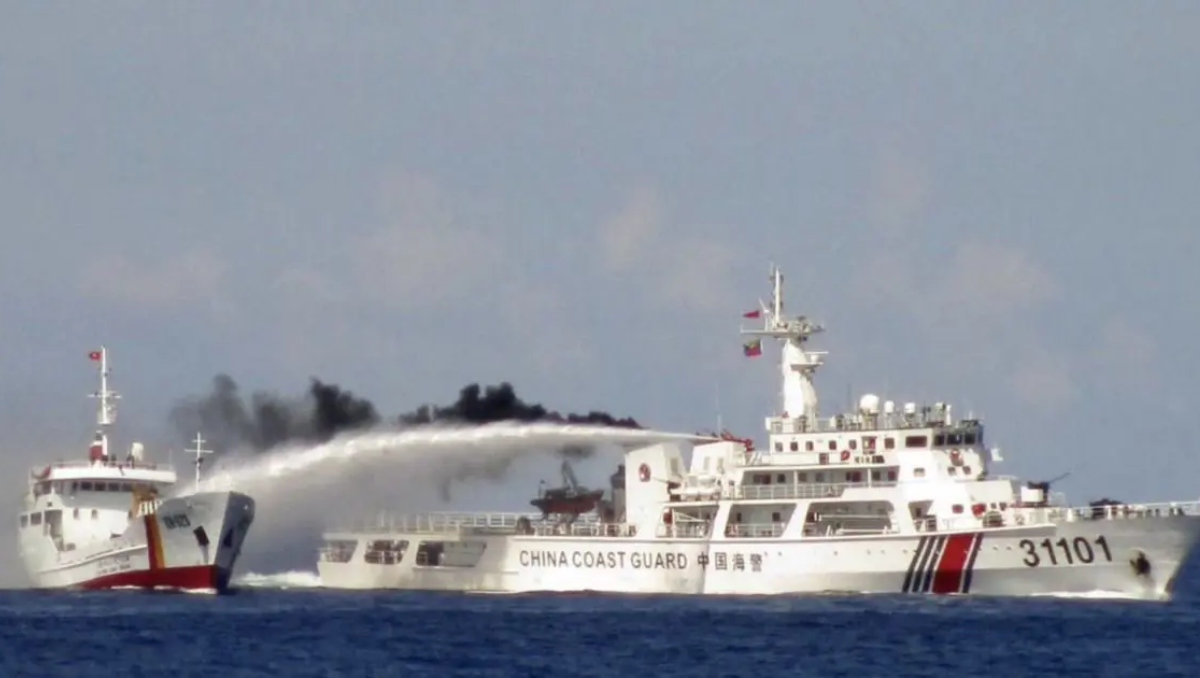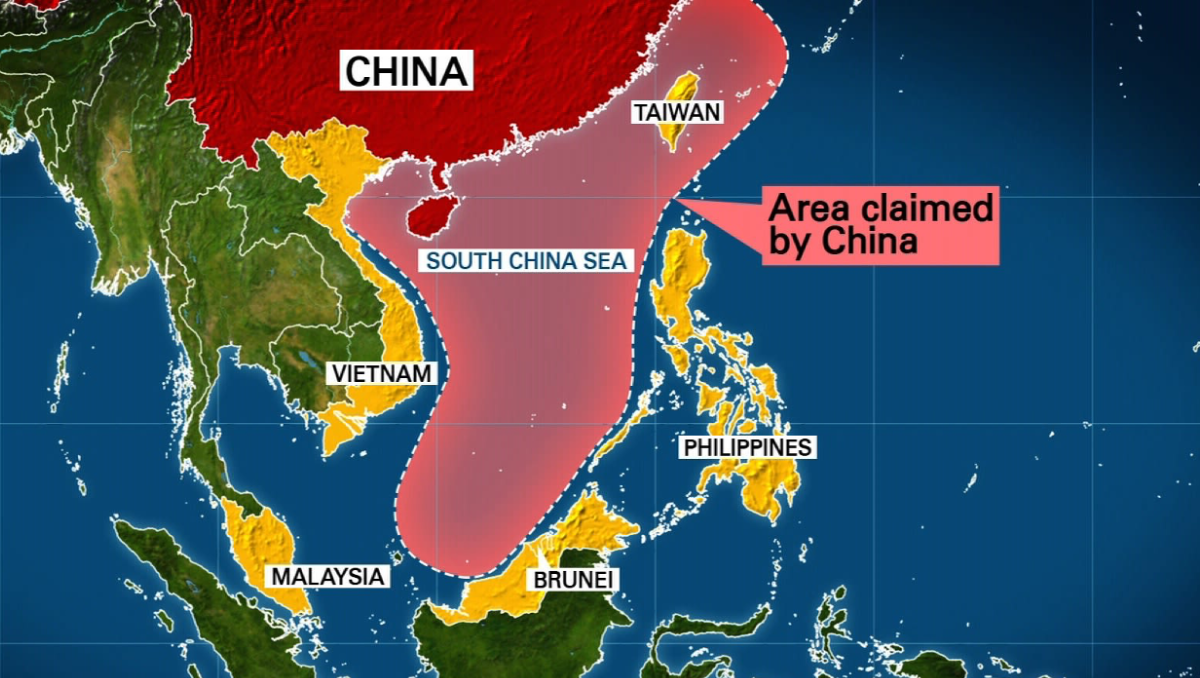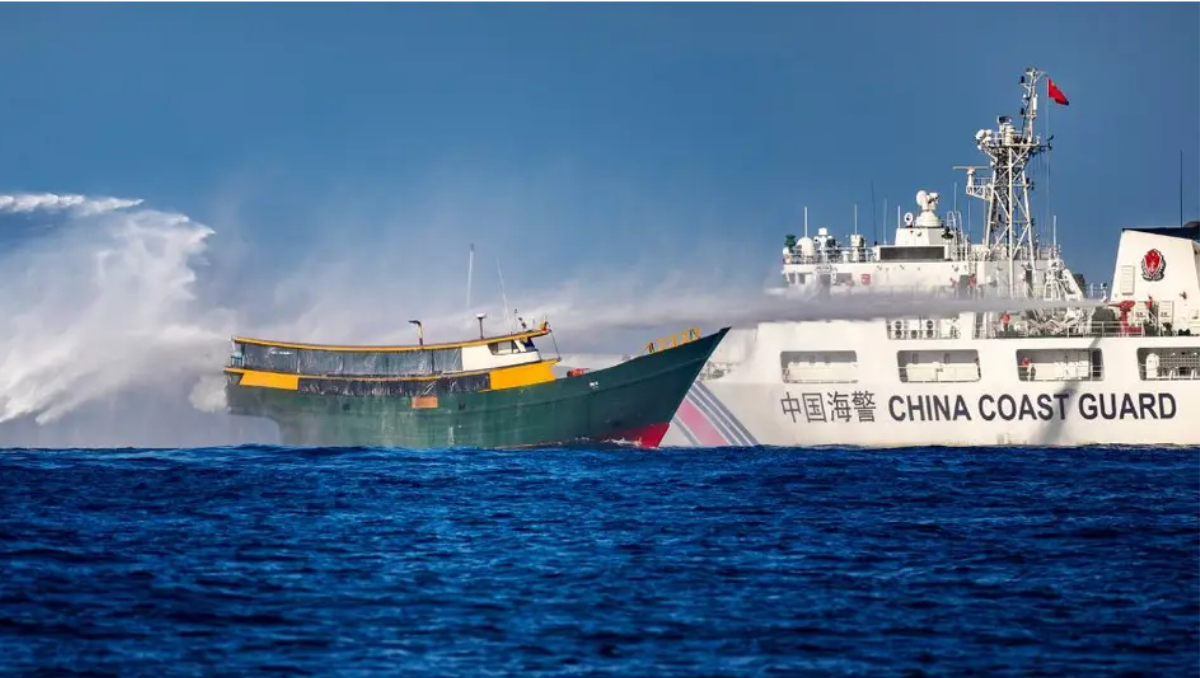After a series of increasingly heated encounters that increased the possibility of a global conflict hotspot in the crucial waterway, the United States criticized China for colliding with the Philippines in the dispute-ridden South China Sea.
According to statements from both countries, a Chinese ship and a Philippine supply ship crashed early on Monday morning in the disputed Spratly Islands, close to Second Thomas Shoal. The Philippine vessels were subjected to “warnings and interceptions, boarding inspections, and forced evictions,” according to the Chinese Coast Guard.
United States accusations
In the South China Sea, China asserts “indisputable sovereignty” over most of the islands and sandbars, including numerous regions hundreds of kilometres away from China’s coastal region. The ambassador of the United States to Manila, MaryKay Carlson, attacked China’s “aggressive, dangerous maneuvers” on X, saying they caused bodily injury and destroyed Philippine vessels.
The incident happened soon after Ferdinand “Bongbong” Marcos Jr., the President of the Philippines issued a warning that any Filipino citizen killed by another nation in the South China Sea would be “very close” to an act of war. There have been no reports of injuries or damage from the crash from China or the Philippines.

The United States has consistently emphasized its “ironclad commitment” to a 1951 mutual defense treaty between the US and the Philippines, which states that both sides would assist in defending each other in the event that one was attacked by a third party, and Marcos has sought deeper ties with Washington.
This instance is the most recent in a series of recent encounters between Beijing and Manila that have concerned Western analysts with the possibility that, should China, decide to take more aggressive action against the Philippines, it may turn into an international issue.
A spokesman for the United States State Department, Matthew Miller claims that China’s actions are growing increasingly dangerous and that the United States supports the Philippine government in condemning them.
After a new legislation enabling China’s coast guard to take foreign ships and hold crew members accused of trespassing for up to 60 days without trial went into force on Saturday, this current incident represents the first run-in between the two nations.
China refutes
As stated by the Chinese Coast Guard, a Philippine cargo ship “neglected China’s repeated instructions” and approached a Chinese ship “deliberately and dangerously” in “an unprofessional manner,” resulting in a collision.
The Coast Guard’s allegation that the Philippines is solely to blame for this was rejected by the Philippine military as “misleading and inaccurate.” Instead, Philippine authorities accused Chinese ships of dangerous maneuvers.
Col. Francel Margareth Padilla, a spokesman for the Philippine army, stated in on X that the “primary concern continues to be the unlawful presence and conduct of Chinese vessels inside the Philippines’ exclusive economic zone, which violates the country’s sovereignty and sovereign rights.”
Looking Back…
In a historic maritime conflict, an international tribunal in The Hague, Netherlands, found in 2016 that China lacked legal standing to assert historic rights over the majority of the South China Sea.

However, Beijing disregarded the decision. Rather, it has been asserting its territorial rights in the strategically significant and abundant waterway. China Coast Guard ships, bolstered by maritime militia boats, have engaged in several confrontations with Philippine ships over the past year, resulting in damage to Philippine ships and injuries to Filipino sailors from water cannon attack.
Known as Ayungin Shoal in the Philippines and Ren’ai Jiao in China, Second Thomas Shoal is a submerged reef that resembles a teardrop and is situated approximately 200 kilometres (125 miles) off the Philippine Island of Palawan. It is a strategic location due to its proximity to the Spratly Islands, a group of islands and reefs that are also claimed by China, the Philippines, and other countries in the region where oil and gas reserves have been discovered.
There have been more direct confrontations between China and other nations in the region, particularly the Philippines and Vietnam, as a result of China’s assertiveness in defending its claim to almost the whole South China Sea.



